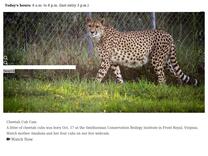Klaus-Peter Koepfli | Smithsonian’s National Zoo and Conservation Biology Institute https://nationalzoo.si.edu/about/staff/klaus-peter-koepfli
species at risk for extinction and to dissect the underlying causes of inbreeding depression
species at risk for extinction and to dissect the underlying causes of inbreeding depression

